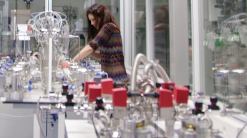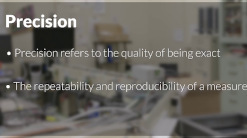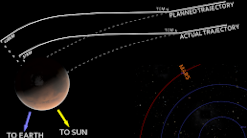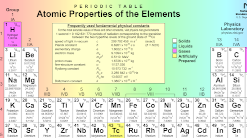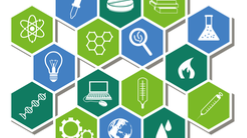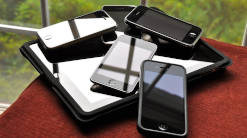Lesson 2 - Standardize - Achieve Precision

Ancient scientists often worked alone. But in our interconnected world, science and technology are developed in dialogue among people across geopolitical and linguistic boundaries. To work across time and space, we need precision. What each individual does must be repeatable and reproducible—first time, every time. That depends on precise tools, precise techniques, and excellent communications.
[The image shows NIST mechanical engineer Herb Bandy using a coordinate measuring machine (CMM) to measure the dimensions of a cylinder-shaped machined part. CMMs are used to precisely measure the dimensions of complex mechanical parts, like those in automotives.]
Getting the same result first time, every time requires precision. We achieve that with good tools and good procedures. Precise measurements enable people separated by time and space to achieve consistent and predictable results, so that they research and build together.
The Last Artifact - Precision Enables Better Science
Videos
How does precision make science more "democratic"? How does it affect international collaboration?
Journal Thread #1 / Prompt 3 - The Guardians
Activities
Step into the shoes of a systems engineer and imagine how you would manage an international team working together.
Activities
You and your fellow students take on the roles of teams of engineers who must coordinate to create a final product that fits together.
For much of human history, every product was made by hand and hand-powered tools, and there was always variation in characteristics and quality. Today, manufacturing requires more consistency and precision. We expect each manufactured item to be exactly the same, and we need precise tools and processes to achieve that goal.
Videos
In this video, the NIST Role Models discuss the concepts of accuracy and precision.
Accuracy vs. Precision - Focus on Precision
Activities
Watch the video Accuracy vs. Precision and consider these questions about precision.
Activities
Let’s look at a familiar product and see how successful the maker has been at maintaining precision in manufacturing. This activity can be a model for the challenges of manufacturing a product that has to be just about perfect—like a drug.
When is “almost” not quite enough? That depends on the problem. Precision implies that a procedure is reliable and repeatable.
NIST Role Models - Standardization Is Key
Videos
Why is it essential to have a standard that everyone can use? The NIST Role Models explain.
Journal Thread #2 / Prompt 2 - How Close?
Activities
Watch the NIST Role Models discuss the importance of standardization, then consider how you would handle measurement in several experiments.
Activities
Read and respond to stories of situations where little variations caused big problems. Get creative with related Mini-STEM activities.
Temperature can often seem relative: what feels warm in one environment may not in another. But temperature is measured in Kelvin, an absolute constant representing energy.
Activities
Look closer at a common chemical reaction to understand heat and energy and learn how they are measured.
Articles
The mole is the unit for the amount of substance—how many atoms, molecules, ions, electrons, or any other particle or specified group of particles. Learn more about the mole and practice some calculations here.
What have you learned about standardization and precision? Challenge yourself with these questions.
What more can you learn about precision?
Around the World and In Your Pocket
Activities
Take a close look at a smart phone. Does it have the appearance of something that has been around the world? This almost ubiquitous device is an example of coordinated measurement and production precision like no other.

